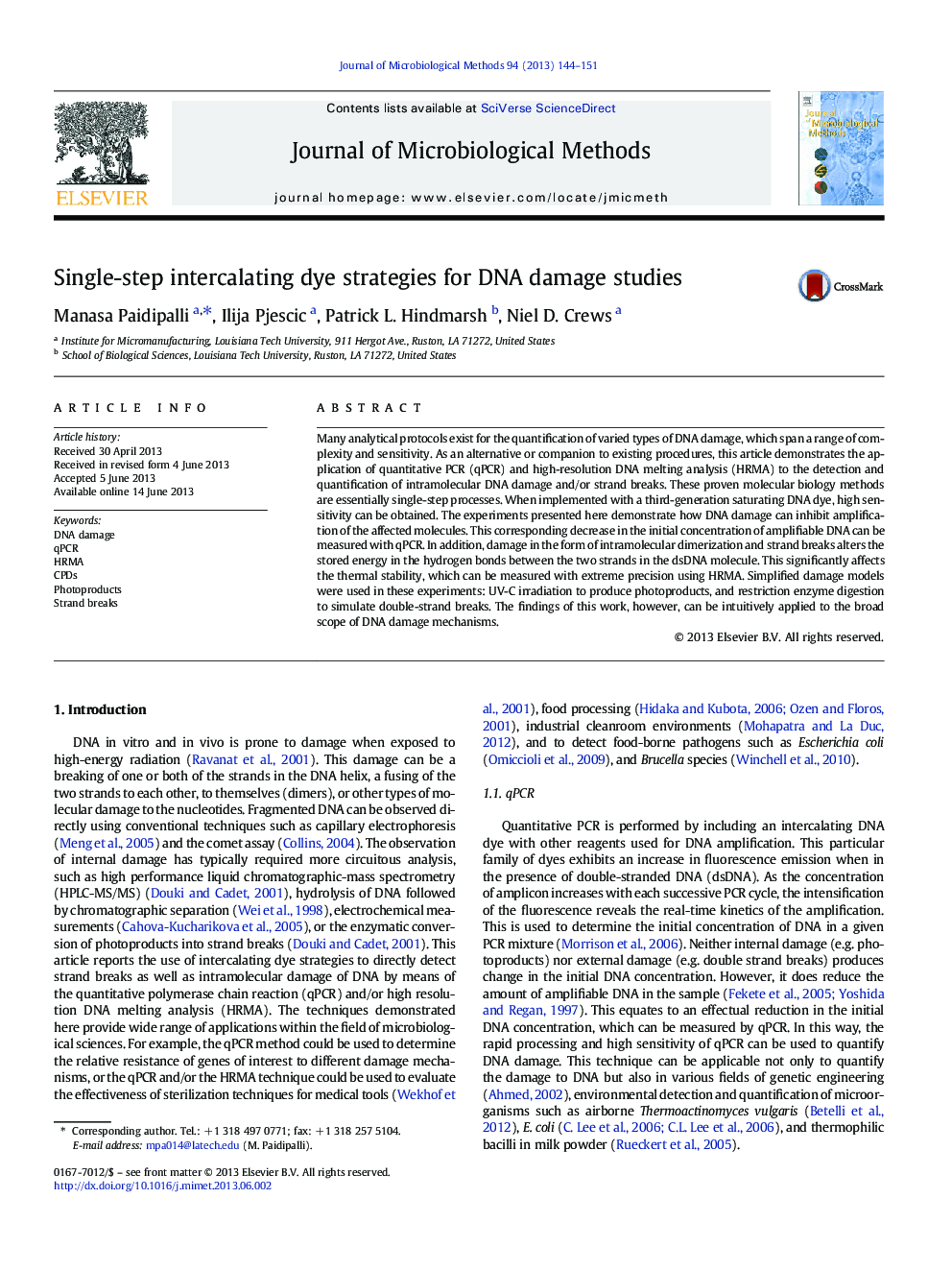| Article ID | Journal | Published Year | Pages | File Type |
|---|---|---|---|---|
| 10889532 | Journal of Microbiological Methods | 2013 | 8 Pages |
Abstract
Many analytical protocols exist for the quantification of varied types of DNA damage, which span a range of complexity and sensitivity. As an alternative or companion to existing procedures, this article demonstrates the application of quantitative PCR (qPCR) and high-resolution DNA melting analysis (HRMA) to the detection and quantification of intramolecular DNA damage and/or strand breaks. These proven molecular biology methods are essentially single-step processes. When implemented with a third-generation saturating DNA dye, high sensitivity can be obtained. The experiments presented here demonstrate how DNA damage can inhibit amplification of the affected molecules. This corresponding decrease in the initial concentration of amplifiable DNA can be measured with qPCR. In addition, damage in the form of intramolecular dimerization and strand breaks alters the stored energy in the hydrogen bonds between the two strands in the dsDNA molecule. This significantly affects the thermal stability, which can be measured with extreme precision using HRMA. Simplified damage models were used in these experiments: UV-C irradiation to produce photoproducts, and restriction enzyme digestion to simulate double-strand breaks. The findings of this work, however, can be intuitively applied to the broad scope of DNA damage mechanisms.
Related Topics
Life Sciences
Biochemistry, Genetics and Molecular Biology
Biotechnology
Authors
Manasa Paidipalli, Ilija Pjescic, Patrick L. Hindmarsh, Niel D. Crews,
